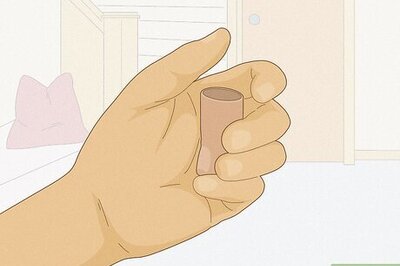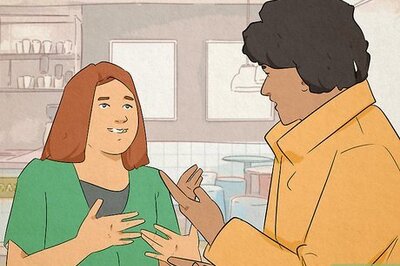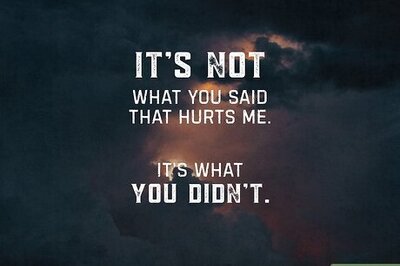
views
Flip 7 Objective
Be the first player to score 200 points by flipping cards. The game comes with Number cards, Score Modifier cards, and Action cards (94 cards in total). In each round, the dealer deals the players 1 card at a time. The goal is to line up a row of up to 7 unique Number cards without busting (receiving a duplicate Number card). At the end of each round, the players tally up their scores based on the values of the Number and Score Modifier cards they received. Then they play more rounds until 1 player becomes the first to collect 200 points. That person is the winner of Flip 7! If a player busts, they don't receive any points for that round. If a player lines up 7 unique Number cards, they achieve a Flip 7, and the round automatically ends. That person also receives 15 bonus points for that round!
Setting Up the Game
Shuffle the deck and choose a player to be the dealer. The dealer is responsible for handing out the cards and giving each player the option to "Hit" (stay in the round and be dealt another card) or "Stay" (leave the round and keep the points they've already been dealt). A player can choose to "Hit" or "Stay" based on their cards and how lucky they feel.
Playing the Game
Deal each player 1 card and have them flip it face up in turn order. Traditionally, the dealer hands out cards starting with the player to their left and continues clockwise around the table. They deal their own card last. Each player must flip their card face up on the table in front of them, where everyone else can see it.
Offer each player the option to "Hit" or "Stay" after dealing. Each player will receive a Number card, a Score Modifier card, or an Action card. They can "Stay" as long as they have a Number card on the table in front of them. If they don't, they must "Hit" and receive another card. If a player receives a Score Modifier card, they must lay it on the table in front of them in a row above their Number cards. Score Modifiers increase a player's score by adding to or multiplying the total from their Number cards. If a player receives an Action card, all play must stop until they follow the Action card's instructions.
Keep dealing cards one at a time until all players bust, "Stay," or get a Flip 7. A player busts (is out of the round) when they receive a Number card that matches another one they've already been dealt. Players who "Stay" are out of the round by choice, but they get to keep whatever points they collected on the turns they already played. Finally, someone wins the round automatically if they can lay 7 unique Number cards on the table. An example of a bust is if a player received a 2 and a 3 in the first two turns, but on the third turn, they receive another 2. In that case, they must stop playing for that round. They also don't receive any points. An example of a Flip 7 is if someone is dealt 7 unique numbers without any duplicates (i.e., 1, 3, 5, 7, 2, 12, 8). In that case, they win the round and earn 15 bonus points. A player must also bank their points and leave the round if they draw a Freeze Action card.
Tally each player's score at the end of the round and write it down. Players who chose to "Stay" earlier in the round, haven't busted, or achieved a Flip 7 should now calculate their scores. To do so, add the values of their Number cards and Score Modifier cards (if they were dealt any) together. If you had a Flip 7, remember to give yourself 15 extra points.
To start a new round, set aside all the cards that were dealt and pick a new dealer. The new dealer is typically the player sitting to the first dealer's left. At the end of each round, add your new scores to your running total to keep track of who's winning. If you run out of cards in the deck, shuffle all the cards that have been played already and start a new one.
Winning the Game
The first player to receive 200 points without busting is the Flip 7 winner! With 3 players, this game takes an average of 20 minutes to finish. The more players you have, the longer it could take—or not. It all depends on the luck of the players' draws. How do you calculate the scores?Add together the values of the Number cards and the Score Modifiers. The Number cards run from 0-12 and are worth as many points as the number printed on the card. The six Score Modifier cards can add 2, 4, 6, 8, or 10 points to your Number card total, or they can multiply that total times 2 (depending on which one, if any, you draw during a round). Example score: At the end of a round, a player has 4 number cards in front of them with values of 1, 3, 6, and 9. They were also dealt a +2 Score Modifier card. Their total is calculated as follows: 1 + 2 + 6 + 9 +2 = 20. Example score with Flip 7: At the end of a round, a player has 7 Number cards with values of 4, 12, 1, 0, 5, 3, and 10. They also have a x2 Score Modifier card. Their total is calculated as follows: (4 + 12 + 1 + 0 + 5 + 3 + 10) x 2 = 70. Since they achieved a Flip 7, they must add 15 points to their total, so their final score for that round is 70 + 15 = 85.
Types of Flip 7 Cards
Number cards In a Flip 7 deck, you'll find that there are as many of each number card as their value. In other words, there are twelve 12 cards, eleven 11 cards, and so on (until you reach 0, of which there is only one in the deck). Lay out any Number card you draw in front of you on the table in a single row.
Score Modifier cards There are 6 Score Modifier cards in the deck: a +2. +4, +6, +8, +10, and x2. They increase the value of your Number cards at the end of each round. For example, if you have 3 Number cards that add up to 5 as well as a +4 Score Modifier card, your total score at the end of the round would be 5 + 4 = 9. Position these cards in a row above your Number cards on the table as you draw them. The x2 Score Modifier card only doubles the total value of your Number cards. It doesn't double your bonus points if you played a Flip 7, nor does it double any other Score Modifier cards you have on the table.
Action cards There are only 3 types of Action cards: Freeze, Flip Three, and Second Chance. There are also only three of each type in the deck. Whenever you draw an Action card, you must complete the action specified on the card before you continue playing. Here's a breakdown of what to expect if you draw one of these cards: Freeze: If you draw a Freeze card, count all the points you've accumulated in the round so far, then withdraw from playing the rest of the round. Flip Three: If you draw a Flip Three card, you must accept 3 cards from the dealer and flip them over one at a time. If you receive a Score Modifier or a Number card, lay them down in front of you like normal. If you get a duplicate card, you're busted. If you draw another Flip Three or a Freeze card, finish drawing the first 3 cards before starting the new action. If you draw a Second Chance card, save it and finish draw however many cards remain in your Flip Three. If, while drawing for Flip 3, you draw enough cards to make a Flip 7, gameplay stops because you just won the round. You don't have to finish the Flip 3 action. Second Chance: If you draw a Second Chance card, keep it for later. This card lets you stay in the round in the event you flip a duplicate Number card. Then you can discard the Second Chance card and the duplicate Number card at the same time. If you're dealt another Second Chance card, give it to another player who is still actively playing in the round. If there aren't any other active players or everyone active has a Second Chance card already, discard it. If you make it to the end of the round without using your Second Chance card, discard it.
Strategies for Winning Flip 7
Know when to "Hit" and when to "Stay." Flip 7 is easier to win if you know when to keep playing and when to bow out. If you already have a high number of points from the cards in front of you, that might be a good time to "Stay" and stop playing for that round. That way, you won't risk getting busted and losing your good score. If you've been dealt high-value Number cards (like a 10, 11, or 12), you may not want to play long because there's a higher likelihood you'll be dealt a duplicate of one of those cards. If you've only been dealt lower value Number cards (like a 0, a 1, or a 2), it's a little safer to "Hit" because there are fewer of these cards in the deck.
Don't discount the 0 Number card. Just because the 0 Number card doesn't add anything to your score doesn't mean it's not valuable. There's only one 0 card in a Flip 7 deck, so you never have to worry about drawing a duplicate of it. For that reason, it makes a much safer addition to a potential Flip 7 row than a higher value Number card, like an 8 or a 12.
Save the Second Chance card. The Second Chance card does exactly what the name suggests. It gives you a second chance at playing it if you're dealt a Number card that matches one you already have in front of you. If you're ever dealt one, count your lucky stars!
Other Fun Card Game Tutorials
Don't let the fun stop with Flip 7. Once you've played Flip 7 to your heart's content, keep the excitement—and your game night—going! Learn how to play the card games below and entertain your party for hours on end. How to Play Uno Flip How to Play Skip Bo 4 Ways to Play the Card Game 13 30+ Easy Card Games to Play with Friends & Family



















Comments
0 comment